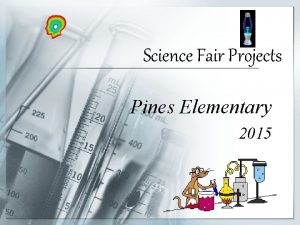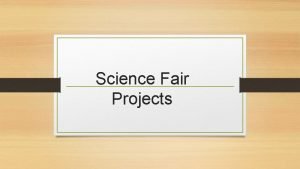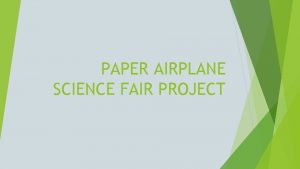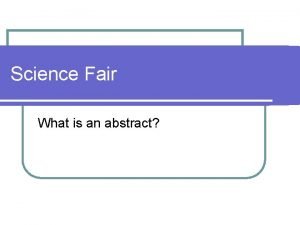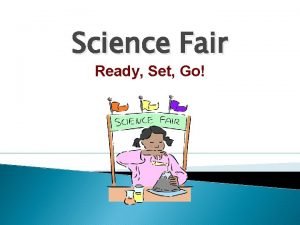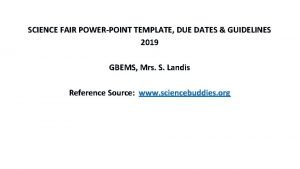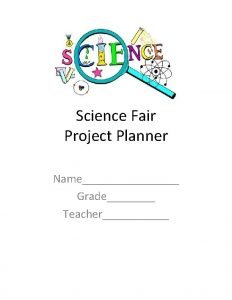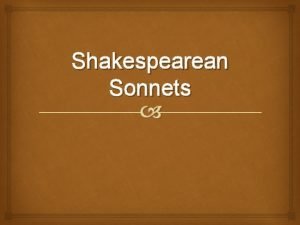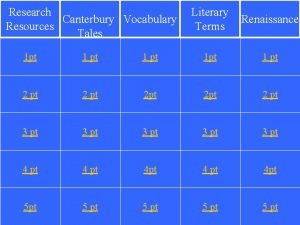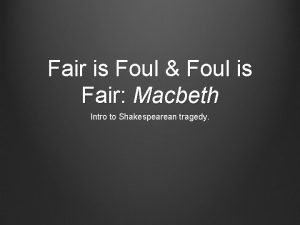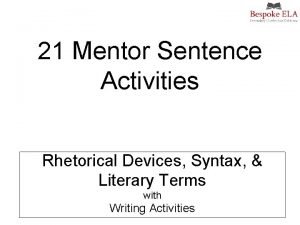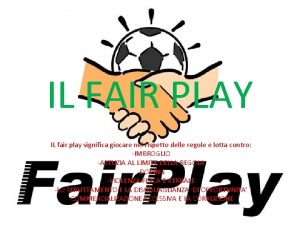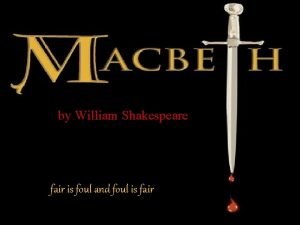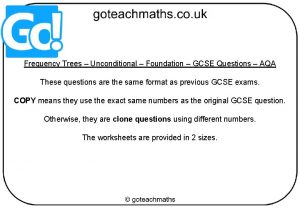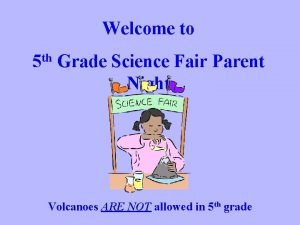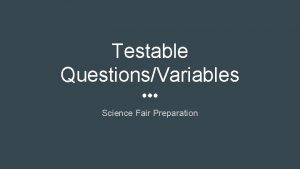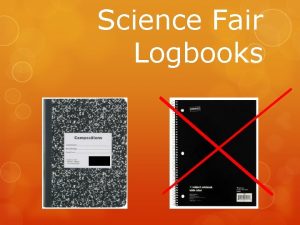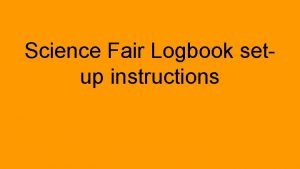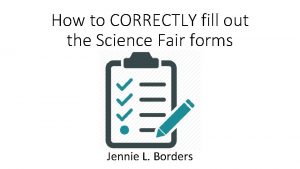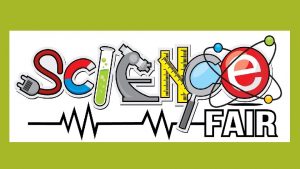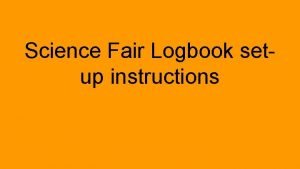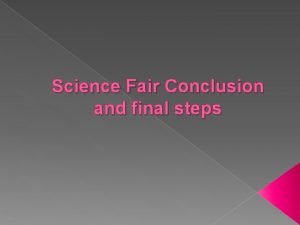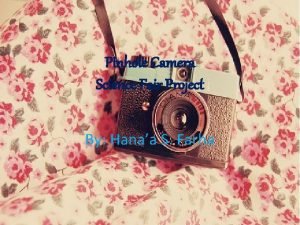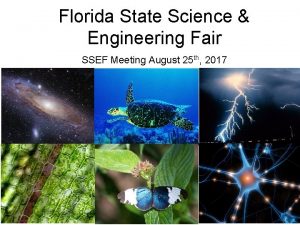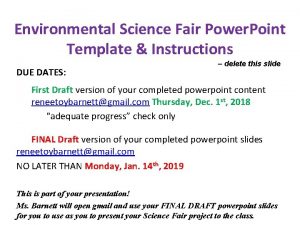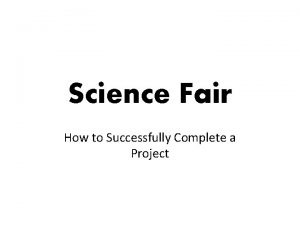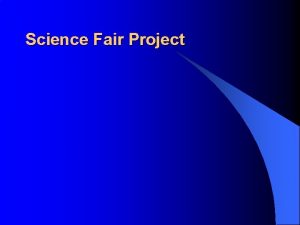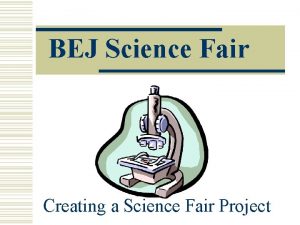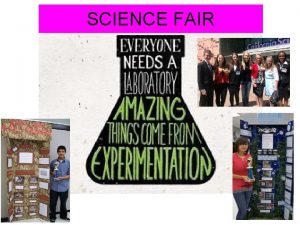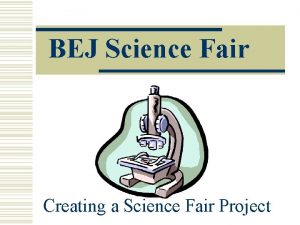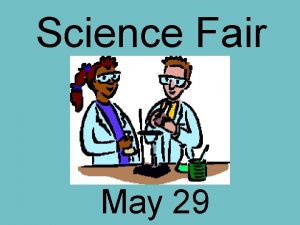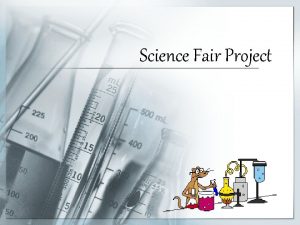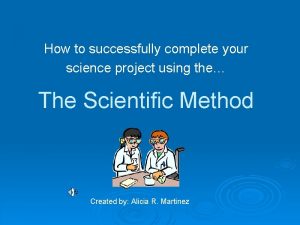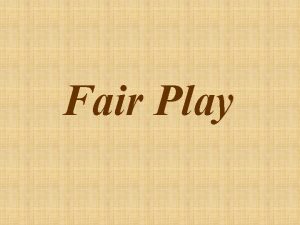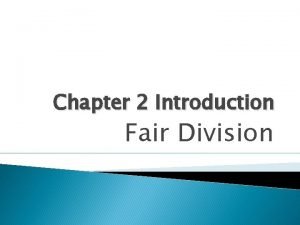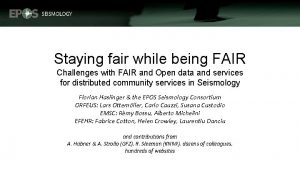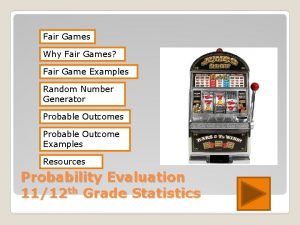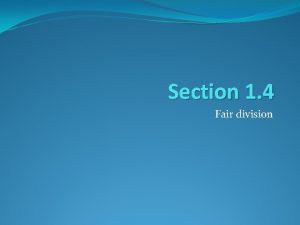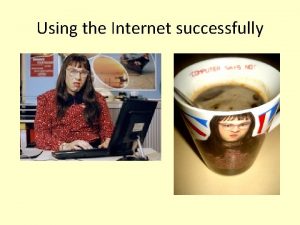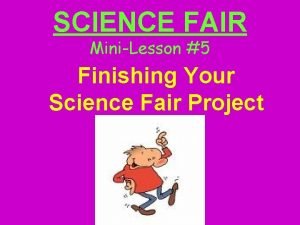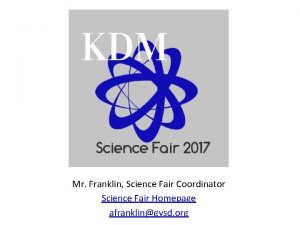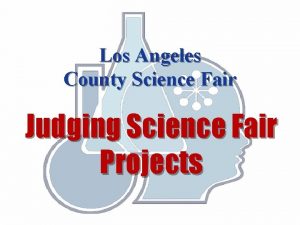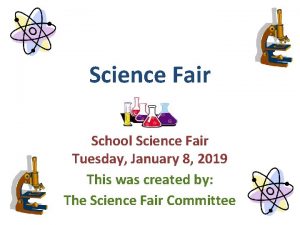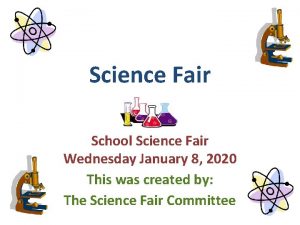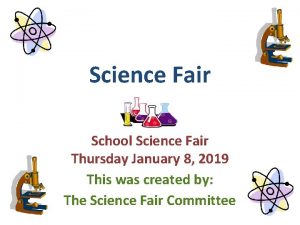How to Successfully Complete a Science Fair Project


































- Slides: 34

How to Successfully Complete a Science Fair Project Everything you need to know about the research process…

What is a Science Project? • Doing an experiment to find out something you do not already know. • Hands on search to answer a question following the scientific method. • Opportunity to do “Real Science” • Opportunity for discovery, fun and “bonding. ”

A Science Project is NOT… • A model or demonstration • Boring • Something you’ve seen many times before • A pretty report about science, with pictures, on a tri-wall display board.

Why do a project? • Science in action, fun. • Integration of knowledge, disciplines. • Encourages creativity and originality, and challenge the student’s potential. • Embraces the New Generation Sunshine State Standards • It is part of the grade

Topic Areas -Animal Science -Behavioral and Social Sciences -Biomedical and Health -Cellular/Molecular Biology and Biochem. -Chemistry -Earth and Environmental Science -Engineering -Environmental Engineering -Intelligent Machines, Robotics, System Software -Mathematics and Computational Science -Physics and Astronomy -Plant Sciences

The Process • Presented by: • Mrs. Shrum • Mr. Ericson

Project Title: The Question • The title should be in the form: • How does X affect Y? • Ask these questions when choosing a title: • Are the variables measurable? • Is it safe to perform? • Materials and time?

Purpose • The purpose is a statement about what you will learn and why the topic is important • In this format… • The purpose of this experiment is to… because…

References • Five sources of information about project • Easybib. com helps with citations • No Wikipedia!

Review of Literature • Report on what the student has learned from resources. • The paper must be written in your child’s own words- no plagiarism.

Hypothesis • The hypothesis is an answer or solution to your title question, based on your research. • It is an “educated guess” about what will happen in the experiment. • Should be in the form: • If…then… because…

Materials • Detailed list of materials needed for experiment. • Include EVERYTHING and the amounts: gloves, thermometers, glassware, etc. • Use standard metric system units (milliliters, centimeters, liters, grams, kilograms, etc. )

Procedures • Step by step list. • How the experiment will be conducted from beginning to end. • Must include the control, independent variable, and constants.

Experiment • The fun part!! After the forms….

Log Book • The log book is used for recording ALL measurements and observations. • Include metric measurements • Do not erase (cross out with a single line and make correction) • Write down time and date of observation • Include materials used and costs • Take photographs during the project (they can be used as part of your display)

Analysis and Conclusion • A summary of the entire experiment. • Answer the following questions: • Was the original hypothesis supported or rejected? Why or why not? • Was your purpose achieved? Why or why not?

Final Bibliography • This is a complete list of all resources used in the project, in proper bibliographic form. • The format for citing sources can be found in the Westwood Science Fair Project Guide. • Use www. easybib. com

Abstract • A brief summary of your entire project, no more than 250 words. • The abstract should be on the 2019 State abstract form. • Answer the following: • • What were you trying to find out? How did you do this? What happened? Why is this important?

Helpful Hints

Saving Your Work • Important!! Save … Save!! • Google Drive through your students school gmail account - saves automatically to the cloud • Save any computer work to a jump drive or email the file to yourself. • Everything that your student works on goes in his/her science fair logbook.

What do students need help with? • Developing responsibility • Follow through • Independence • Keeping to a timeline

How can you help as a parent? • Help and guidance are the key (not doing it for them!) • Let the student choose a project that interests him/her • Praise your child • Finding community resources • Typing as you go along, saving it on the computer

The Forms • Mrs. Charbonnet

Topics that need extra forms • Human subjects • Vertebrates • Potentially hazardous biological agents • Hazardous chemicals, activities, or devices

ISEF Forms for Students • After the title, purpose, hypothesis, references, materials, and procedures are finished, you must fill out ISEF paperwork for their project. • Their project must be approved by the Scientific Review Committee (SRC) before they can begin experimentation. • One form must be signed by their guardian.

Filling out Forms • Go to SBAC website; Departments �� Science Fair • On right hand side of page see ”Science Fair Links” click on “Student Forms” • ISEF rules wizard will help you fill out the forms you need for your student’s particular project.

Using the ISEF Rules Wizard

Abstract Forms • Use the 2021 65 th State Science and Engineering form. Note that it is different from the international science and engineering form. • https: //ssefflorida. com/wpcontent/uploads/2019/07/2020 -SSEFAbstract. pdf

Internet sites • Say Hi to Mr. Bowlin

Internet sites • ISEF Official Website • Science Fair Center for nonscientist parents • How to Write a Science Fair Project Report • Project Ideas by Science Buddies • Intermediate Projects (Grades 7 -9)

Display Boards • Mrs. Gerrels • Mrs. Shrum • Mr. Heaney

Display Board

Now… Here are Example of a Completed Project from Previous Years!

Volunteers • Ms. Gerrels
 Tooth decay science fair project graph
Tooth decay science fair project graph Science fair project log book template
Science fair project log book template What is an abstract in a science fair
What is an abstract in a science fair Airplane science project
Airplane science project Components of a science fair project
Components of a science fair project Optical illusions science fair projects
Optical illusions science fair projects Abstract science fair project
Abstract science fair project Science fair project timeline
Science fair project timeline Science fair template powerpoint
Science fair template powerpoint Science fair project planner
Science fair project planner 14 line sonnet
14 line sonnet Foul is fair and fair is foul literary device
Foul is fair and fair is foul literary device Macbeth stylistic devices
Macbeth stylistic devices Who says fair is foul and foul is fair
Who says fair is foul and foul is fair Rhetorical devices syntax
Rhetorical devices syntax Significato fair play
Significato fair play Examples of fair is foul and foul is fair in macbeth
Examples of fair is foul and foul is fair in macbeth My favourite subject science
My favourite subject science Two ordinary fair dice are rolled complete the tree diagram
Two ordinary fair dice are rolled complete the tree diagram Science fair abstract examples
Science fair abstract examples Scientific testable questions
Scientific testable questions Science fair logbook
Science fair logbook How to write a logbook for a science project
How to write a logbook for a science project Science fair checklist
Science fair checklist Project board isef
Project board isef Background information on project
Background information on project Astronomy science fair projects
Astronomy science fair projects Background research example for science fair
Background research example for science fair Scientific logbook example
Scientific logbook example Science fair conclusion
Science fair conclusion Pinhole camera class 6 project
Pinhole camera class 6 project Science fair proposal
Science fair proposal Ssef florida abstract form
Ssef florida abstract form Science expo background
Science expo background Basef science fair
Basef science fair
